Albury is a major regional city in New South Wales, Australia, located on the Hume Highway on the northern side of the
Murray River. Albury is separated from its twin city in Victoria, Wodonga by the
Murray River. Together, the two cities form an urban area with a
population of more than 80,000, It is 462 kilometres from the state capital
Sydney and 326 kilometres from the Victorian capital
Melbourne.
Said to be named after a town in England, Albury developed as a major transport link between the colonies of New South Wales and Victoria and was proclaimed a city in 1946.
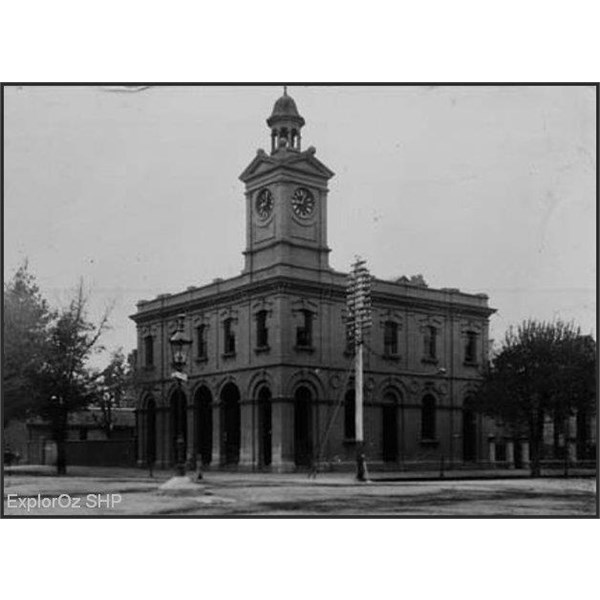
Albury Post Office 1907
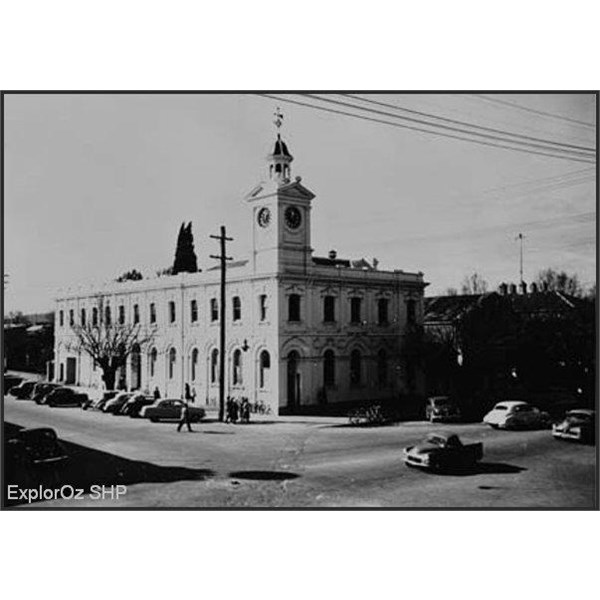
Albury Post Office 1955
The
explorers Hume and Hovell arrived at what their maps called 'Crossing Point', but is now known as the
Murray River at Albury, on 16 November 1824. They named the river the Hume River, after Hume's father, and the next day inscribed a tree by the river bank before continuing their journey south to Westernport in Victoria. In 1830, explorer Captain Charles Sturt discovered the Hume River downstream at its
junction with the
Murrumbidgee River. Not realising it was the same river, he named it the
Murray River. Both names persisted for some time, Hume falling into disuse eventually in favour of Murray. A crossing place for the Murray became popular close to where Hovell inscribed the tree. In summer it was usually possible to cross the river by foot.
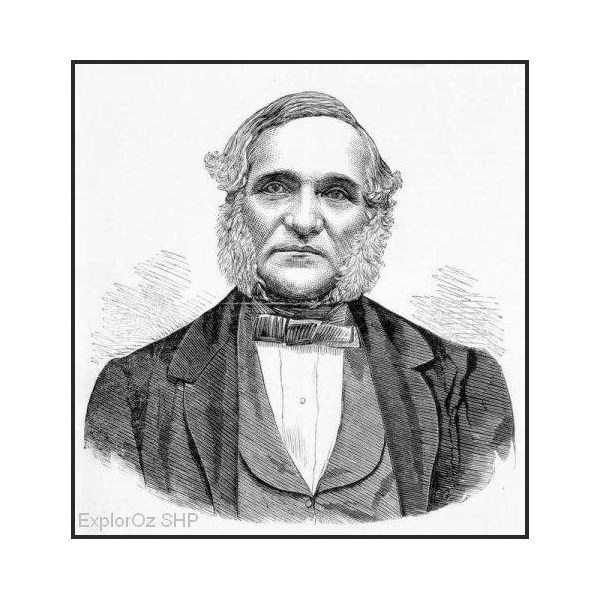
print of Charles Ebden, produced shortly after his death, based on an earlier photograph
Among the first squatters to follow in
the steps of the
explorers and settle in the district were William Wyse and Charles Ebden.
The first European buildings erected at the crossing place were a provisions store and some small huts.
By 1847 the Albury settlement included two public houses and a handful of huts, a police barracks and a blacksmiths. A log punt established in 1844 serviced the crossing of the
Murray River. Albury
Post Office opened on 1 April 1843, closed in 1845, then reopened in the township on 1 February 1847.
In 1851, with the separation of Victoria from New South Wales, and the border falling on the
Murray River, Albury found itself a frontier town. With an increase in commerce with
Melbourne, the first
bridge was built in 1860 to the design of surveyor William Snell Chauncy.

William Snell Chauncy 1840
Albury at this time became a Customs Post between the two colonies as New South Wales held a protectionist stance after gaining its constitution in 1856.
Albury was at this time starting to grow substantially with German speaking immigrants using the area to grow grapes for wine. By the 1870s a butter factory was established, a flour mill, wineries and locally brewed cider and soft drinks were available.

Overlooking Albury from Monument Hill in the 1920s
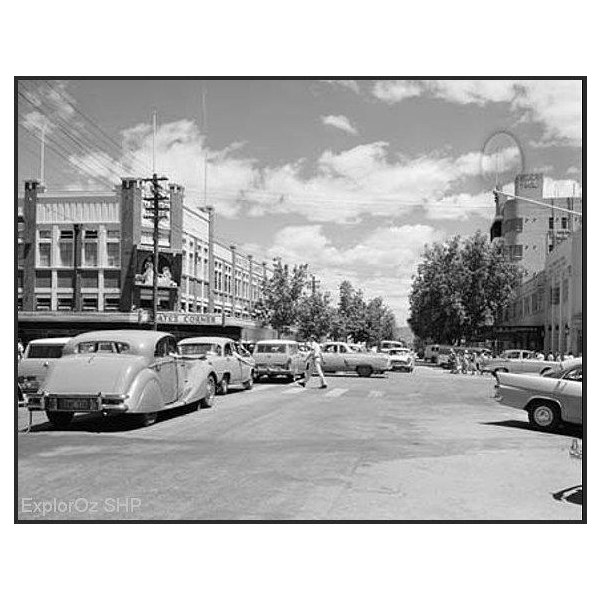
Dean Street, Albury, 1961
The railway line from
Sydney arrived at Albury in 1881. A temporary wooden railway
bridge joined the line to the Victorian network in 1883. New South Wales and Victoria had different track gauges until 1962, when the first train ran direct from
Sydney to
Melbourne. The States could not initially agree which should be the transfer point so they had an expensive and attractive iron lattice
bridge sent from Scotland which accommodated both gauges. The
bridge is still standing astride the Murray and is in daily use.
In 1888 Albury built its first school house. The city's first mayor James Fallon was an innovator of the Public School, funding a demonstration High School to be built on Kiewa Street
In 1934, a Douglas DC-2 airliner of KLM (the "Uiver"), a competitor in the MacRobertson Air Race (also known as the London to
Melbourne Air Race), made an emergency night landing at the town's racecourse after becoming lost during severe thunderstorms. After signalling by Morse code A-L-B-U-R-Y to the lost aircrew by using the entire town's public lighting system, the "Uiver" was guided in to land safely. The makeshift runway at the racecourse was illuminated by the headlights of cars belonging to local residents who had responded to a special news bulletin on ABC Radio 2CO. After refuelling the next day, many local volunteers helped pull the stranded aircraft out of the mud and the aircraft was able to take off and continue to
Melbourne where it won first prize in the race's handicap category and became second overall.
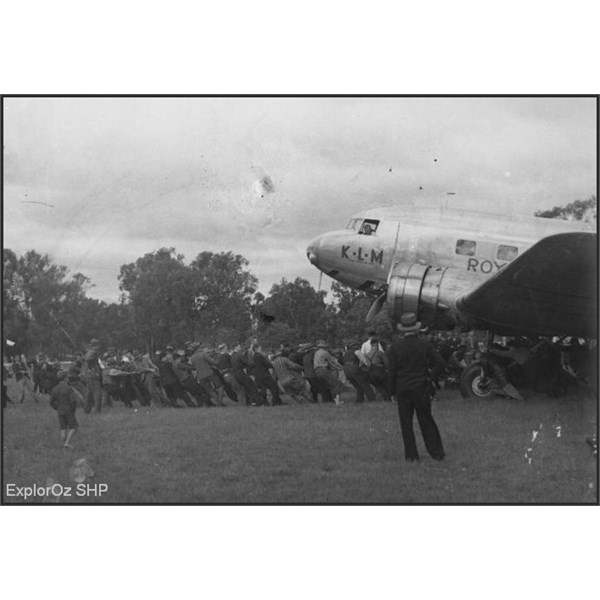
The Uiver being pulled out of the mud after its emergency landing in Albury in 1934
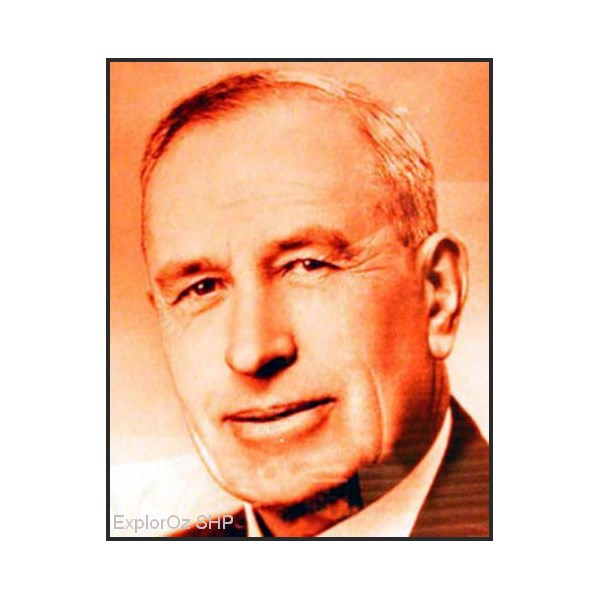
Cleaver Bunton
Cleaver Bunton was working at the local ABC radio station in 1934. After the plane landed in Albury Bunton interviewed wireless operator Van Brugge. Bunton recalled the admiration Van Brugge had for the Uiver pilot Captain Parmentier
Sir McPherson offered fifteen thousand pounds prize money and attracted 64 entrants. A whittling down of entrants to the more serious competitors resulted in a final 20 aircraft from Australia,
United States, Britain,
Denmark, New Zealand and the Netherlands making the starting line. The racers took off from the Royal Air Force Mildenhall Aerodrome, 70
miles north of London. The race stared at 6:30 am on Sunday October 20th, 1934 with planes leaving at 45-second intervals.
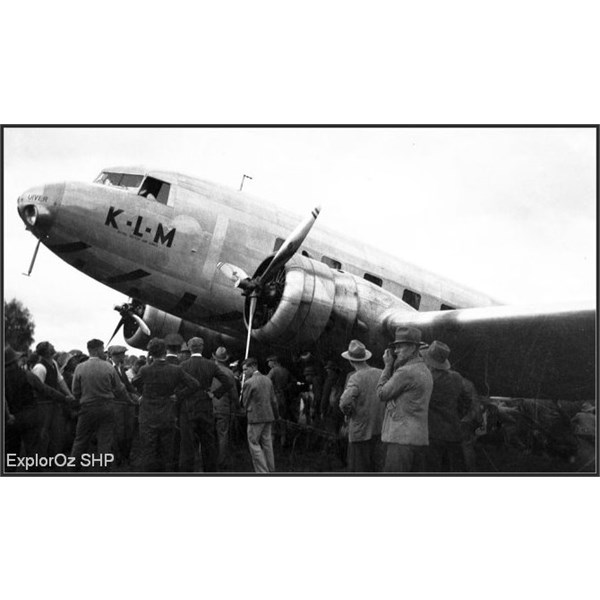
The Uiver at Albury

Uiver Memorial Albury
One of the most unusual entries was a Douglas DC2 entered by KLM Royal Dutch Airlines. It was christened the "Uiver" which is Dutch for stork. It was the biggest competitor and the only craft to carry passengers in addition to its crew of four. KLM wanted to prove that they could serve Australia with a twice-weekly air service and they were using their brand new all metal comfortably equipped DC2 to make their point.
The pilot Captain Koene Dirk Parmentier and First Officer Johannes Moll knew much of the journey
well as they flew the airlines weekly service to the Dutch East Indies.
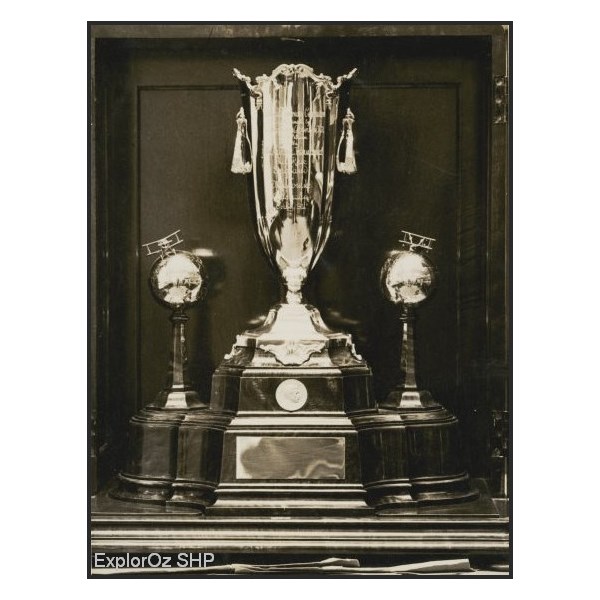
The MacRobertson Air Race Trophy.
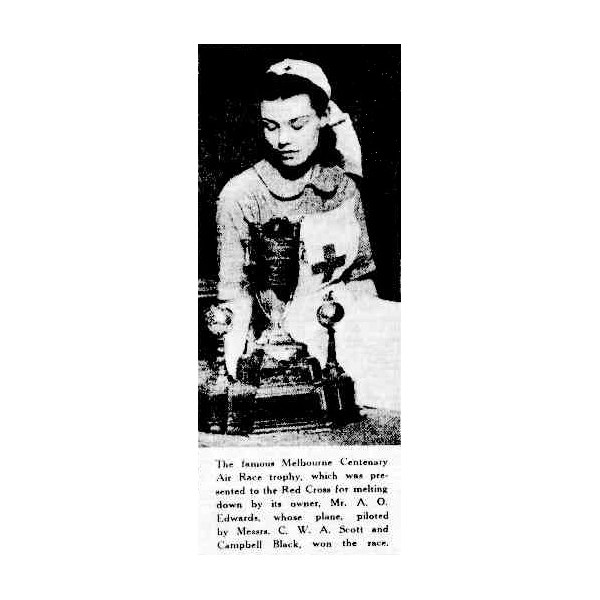
Melbourne Centenery Air Race Trophy Red Cross 1941
After many years of speculation as to the whereabouts of this trophy it would now seem that this article in the
Sydney Morning Herald January 24, 1941. Is now conclusive proof that the trophy was indeed donated to the Red Cross to be melted down for the war effort and is therefore no longer in existence.
Albury played a military role in World War II with the establishment of a base at Bonegilla. Proclaimed a city in 1946, Albury and played a role in the Post-war immigration to Australia with the establishment nearby of Australia's first migrant centre, the Bonegilla Migrant Reception and Training Centre in 1947.
Albury railway station is on the main
Sydney-
Melbourne railway line. Originally, New South Wales and Victoria had different track gauges, which meant that all travellers in either direction had to change trains at Albury. To accommodate this, a very long railway platform was needed; the 450-metre (1,480 ft) long covered platform is one of the longest in Australia.
In 1873, the 5-foot-3-inch broad gauge railway line from
Melbourne reached the township of Belvoir/Wodonga. In 1881, the New South Wales 4-foot-8.5-inch standard gauge railway line reached Albury, with a railway
bridge joining the two colonies in 1883. Albury became the stop over, where passengers on the
Melbourne-
Sydney journey changed trains until 1962, when a standard gauge track was opened between the two capitals. After World War II, in an attempt to overcome the difference in gauges and speed up traffic, a bogie exchange device lifted freight wagons and carriages allowing workers to refit rolling stock with different gauged wheel-sets.
The break of railway gauge at Albury was a major impediment to Australia's war effort and
infrastructure during both World Wars, as every soldier, every item of equipment, and all supplies had to be off-loaded from the broad gauge and reloaded onto a standard gauge railway wagon on the opposite side of the platform. In his book Tramps Abroad, writer Mark Twain spoke of the break of gauge at Albury and changing trains: "Now comes a singular thing, the oddest thing, the strangest thing, the unaccountable marvel that Australia can show, namely the break of gauge at Albury. Think of the paralysis of intellect that gave that idea birth"
Military armouries and warehouses were established in the vicinity of Albury. Similar stores were also established at Tocumwal and Oaklands.
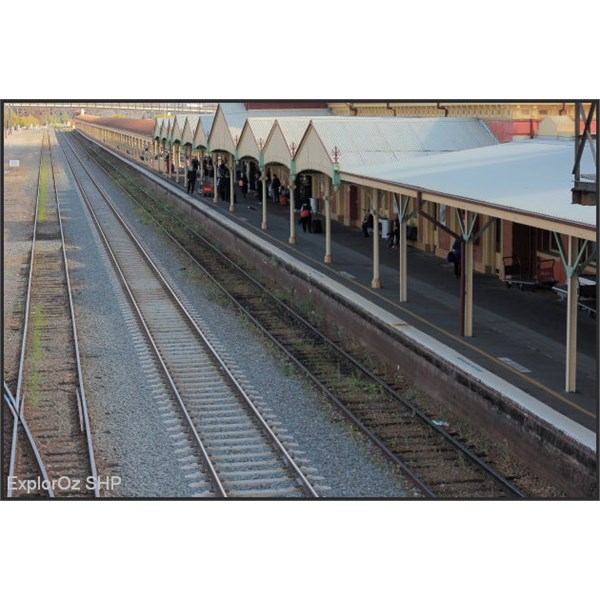
The tracks and long platform at Albury
The conversion of the broad gauge track to a second standard gauge track, between
Seymour and Albury, was substantially completed in 2011.